ASUS ROG Phone 8 review: flagship gaming phone has never been better
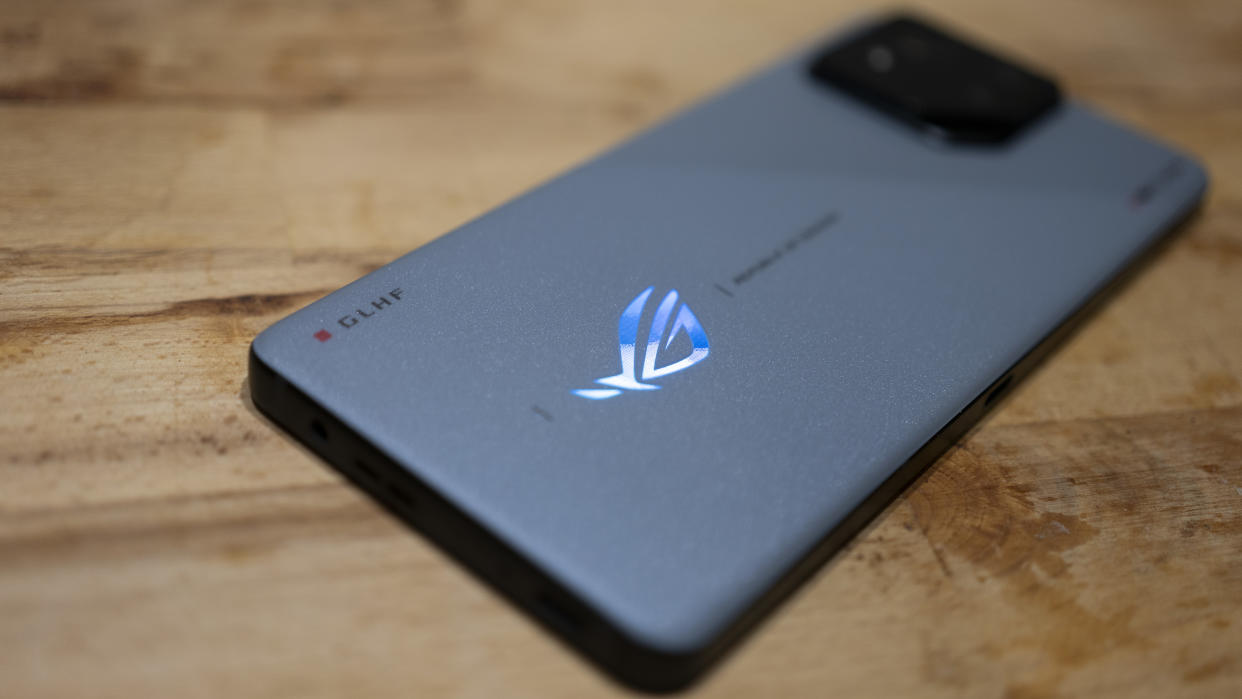
That the ROG Phone - ASUS’ Android handset made with gaming in mind - has reached version seven (there was no ROG Phone 4) must tell us something. That despite the phone being really no different in its hardware or function than any number of other smartphones, there's enough to love about both ASUS’ styling and the Android gaming scene (a more chaotic place than Apple’s walled-off App Store but still absolutely huge business) to support the creation of yet another Snapdragon-based phone, especially if it rivals the best camera phones out there for performance. It’s the Snapdragon 8 Gen 3, however, the newest chip in the line which you’ll also find in the OnePlus 12 and Samsung Galaxy S24.
Every Android phone is a gaming phone in the same way every Windows laptop is a gaming laptop - it entirely depends on which games you want to play and what sort of experience you’re prepared to put up with. The ROG Phone 8 is for those who want to play the latest 3D titles and don’t intend to suffer framerate or resolution penalties. Its tagline of ‘Beyond Gaming’ is telling, however. Just as gaming laptops also make good platforms for creative apps, so the ROG Phone 8 pushing pixels and editing video - the question is whether that’s something you want to do on your phone.
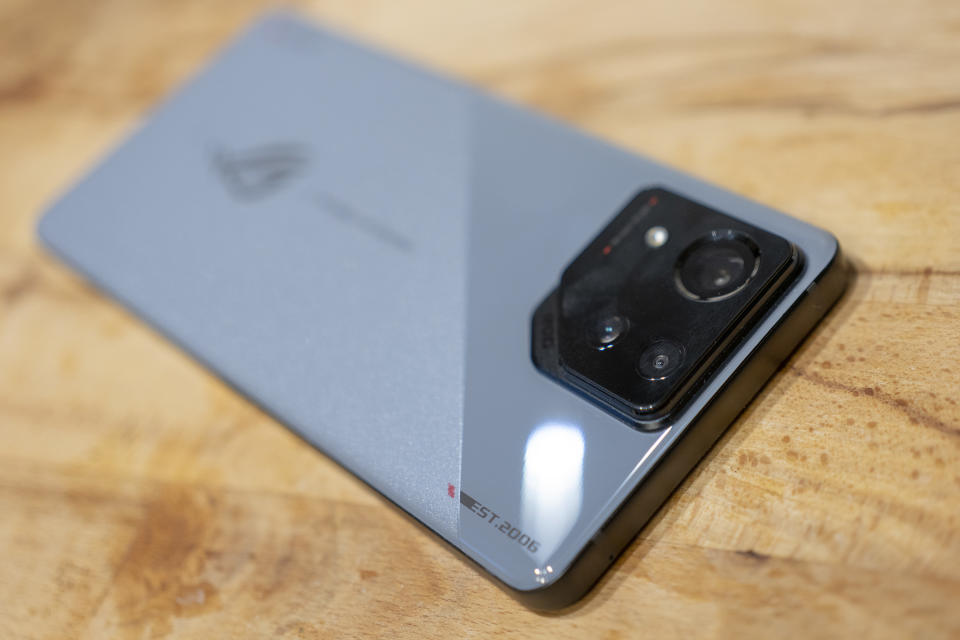
ASUS ROG Phone 8 review: Key specifications
ASUS ROG Phone 8 review: Design and screen
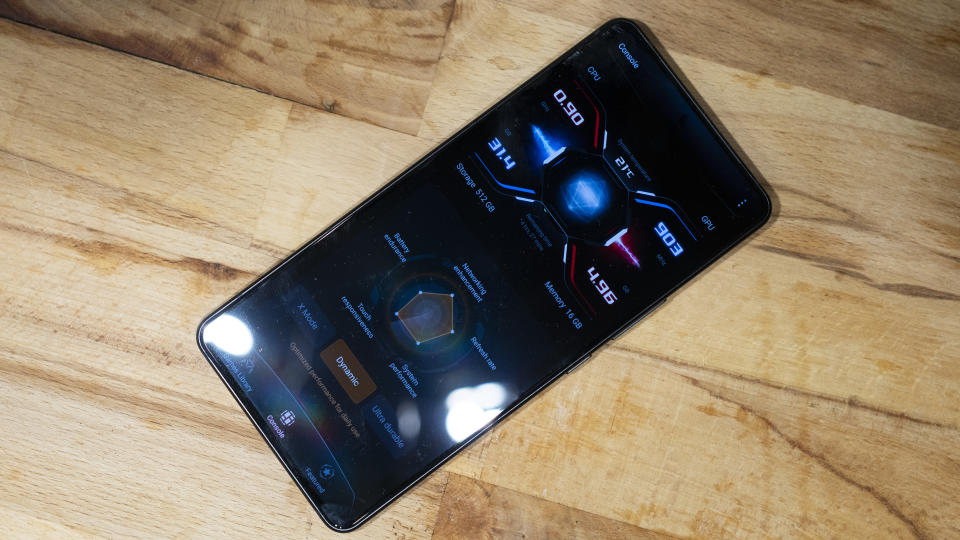
The ROG Phone 8 is a chunky unit, and comes with a rigid case in the box that has cutouts in all the right places to expose the touch-sensitive panels on the top of the phone that act like the shoulder bumpers on a game controller, and the light-up Asus logo on the back. The phone itself is slimmer than previous models - 8.9mm thick instead of the 10.3mm of the ROG Phone 7 - and clips into a new external cooler/controller, the AeroActive Cooler X, which we weren’t sent.
The cooler has a fan that extracts heat from the phone via a contact patch on the back - the clear panel in the case can be removed to facilitate this - and extra game control buttons. It connects to the ROG Phone 8’s most distinctive feature, a second USB-C port on the long edge facing away from the lock and volume buttons. You can use this port for charging too, perhaps if you’ve got an HDMI cable attached to the one in the usual position at the bottom of the phone. There are no rubber plugs for the USB ports, despite the IP68 certification, with internal seals taking on the job of keeping water and dust out.
Elsewhere, we’re very much in typical Android phone territory, with the phone feeling like less of a compromise than previous models have, the game-centric features intruding less on general use. The screen is particularly nice, bright and with a pixel density of around 388ppi, a 20:9 aspect ratio, and the same resolution as the Samsung Galaxy S23. There are no compromises here, and the 165Hz refresh rate, which will be of some interest to gamers, makes the phone feel particularly smooth and responsive. Most of the time you’ll want to keep it on a lower setting, to conserve battery power, and there's an automatic setting for this.
ASUS ROG Phone 8 review: Features
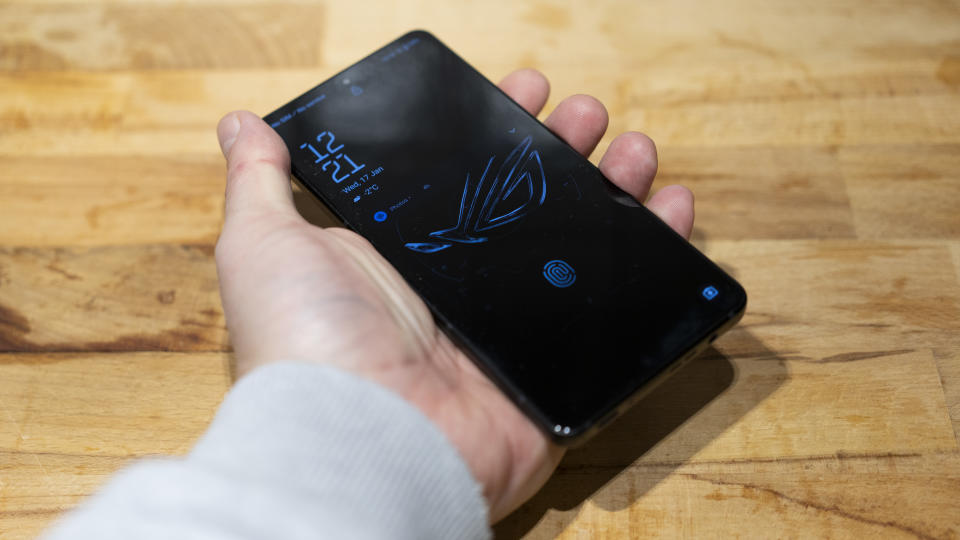
Aside from the extra USB port, the shoulder buttons and the sheer quality of the internal components, there's little about the ROG Phone 8 to distinguish it from other phones at this level. It has a light-up logo/screen on the back, which can be turned off, and the presence of a 3.5mm headphone jack is nice to see, but Asus has worked to remove the worst of the gamer branding. It blends in as another black rectangle phone if you want it to. There are stereo speakers too, but as with all phone speakers they’re fine for a video call or playing an annoying tune, but you’ll want some of the best headphones, or a Bluetooth speaker, for quality audio.
In order to keep its powerful internals in check, the ROG Phone 8 uses ASUS’ familiar Armory Crate app - the same sort of thing found on the Ally portable game deck - to collate all its settings in one place. From here you can control when the phone enters its ‘X Mode’, its high-performance mode, which can also be activated from the quick settings shade. The app provides a great deal of information about the phone, such as its current temperature and the amount of storage and RAM in use, as well as settings for the lighting (which can be synced with ASUS’ Aura PC app if you’re already invested in the ecosystem) and external cooler when attached.
ASUS ROG Phone 8 review: Performance
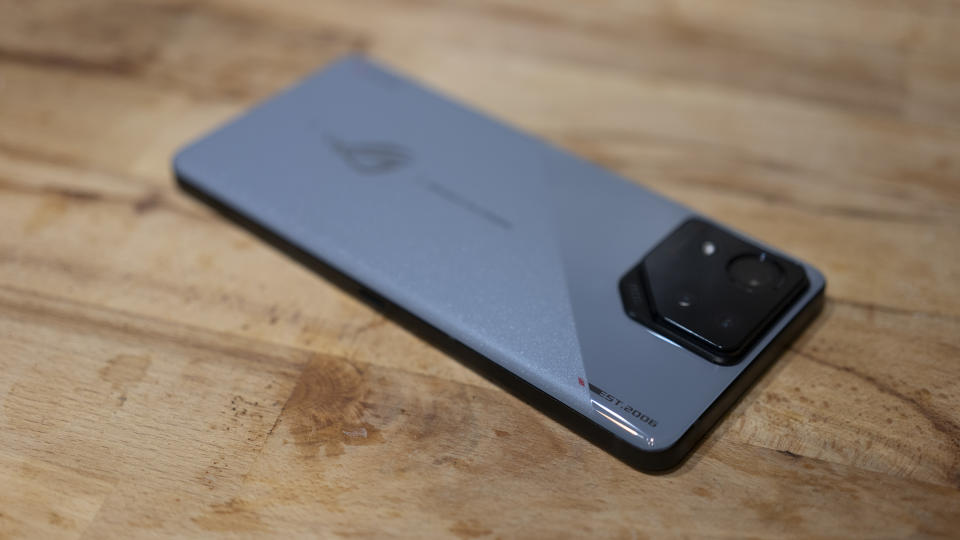
With the latest Snapdragon 8 Gen 3 ship purring away within it, you’d expect some serious performance out of the ROG Phone 8. And it easily bests the Samsung Galaxy S23 Ultra in the Geekbench 6 tests, scoring over 2000 points more in the multicore tests, putting it about level with the iPhone 15 Pro. We’re sure the Galaxy S24 family will have something to say about that when it arrives this year, however.
Having the kind of storage and RAM headroom the ROG Phone 8 provides means you can have more games downloaded at once, and that you can switch between them more easily if you’re indecisive. A feature of X Mode sees it close background applications to improve performance, but 16GB is a ludicrously high amount for a phone to have, and multitasking never seemed to be a problem.
The Snapdragon chip at the heart of it all is an eight-core model that mixes up the 4x4 template set down by previous releases. There's one particularly fast core - a Cortex-X4 at 3.3GHz in this case - with five friends who run slightly slower (Cortex-A720 at 3.2GHz) and two that are slower but more efficient (Cortex-A520 at 2.3GHz) for background tasks. This arrangement means you’ve got more multi-core firepower than many other chipset layouts, which would usually come at the expense of battery life, but the new chipset seems to have an answer to that, as we’ll see later.
ASUS ROG Phone 8 review: Camera
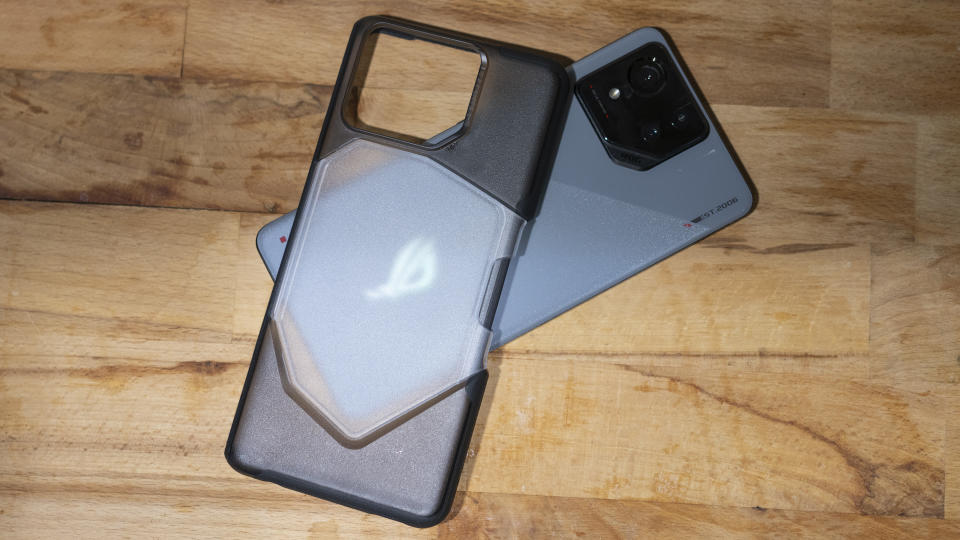
Being able to shoot 8K video at 24FPS is the headline feature of the triple camera bulge on the back of the ROG Phone 8. Whether this capability in a phone is ever actually useful - beyond being able to crop into the footage - is debatable, but what it does mean is that the handset is capable of shooting 4K at 60FPS, 1080p at up to 120FPS, and can manage 240FPS if you drop to 720p. There's HDR10+ recording too, plus gyro stabilisation.
ASUS ROG Phone 8 review: Battery and charging
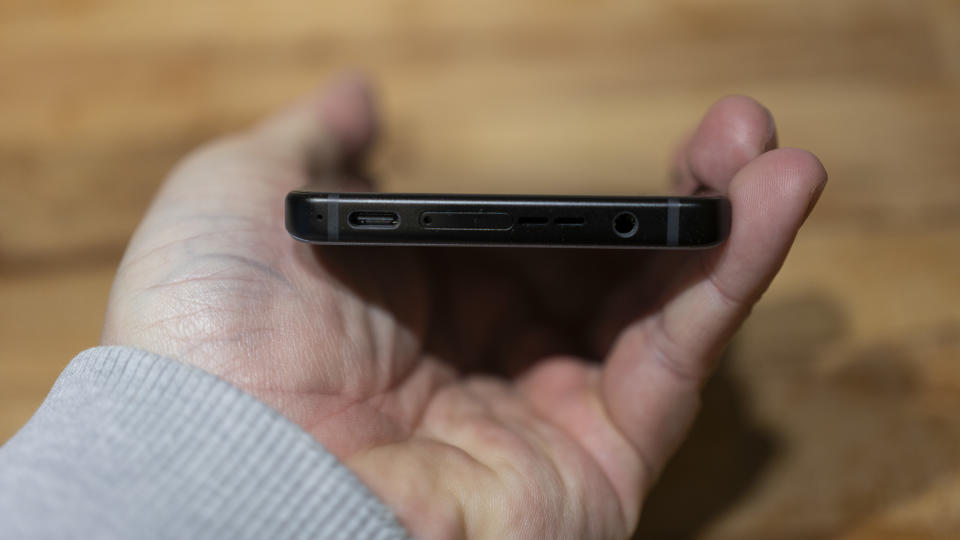
ASUS has put a 5500 mAh battery in the ROG Phone 8, which is enough to keep it running for almost 23 hours with the screen on and at 50% brightness, plus the phone in its everyday ‘dynamic’ power profile, in our tests. This is a remarkable figure, and equates to several days between charges if you allow the phone to go into standby. Using it for gaming, powering the fan attachment and using X Mode to prioritise performance will see this drop, but you can always use the free USB port to top it up.
Charging comes in at 65W, and there's a charger in the box that can spit out exactly that much power for a fast re-juicing. There's wireless charging too, from a 15W Qi pad, and it can reverse-wireless-charge another device if you put them back-to-back.
ASUS ROG Phone 8 review: Price
The version of the phone we were sent for review has 16GB of RAM and 512GB of storage, which ought to be enough for anyone. There are plenty of laptops available which don’t hit those specs, but if the RRP of £1,099.99 is too much for you there's a lower-spec version with 8GB of RAM and 256GB of storage for £949.99.
If that doesn’t sound like enough performance for your pocket, there's a Pro edition of the phone too, which keeps the same chipset but increases the RAM to 24 GB RAM, doubles the storage to 1 TB, and puts an AeroActive Cooler X in the box for £1,299.99. This model is exclusive to the ASUS online store.
The price is high, and rivals that of the iPhone 15 Pro Max. Even in its Pro configuration, however, the ROG Phone 8 is cheaper than the Galaxy S23 Ultra.
Should I buy the ASUS ROG Phone 8?

This is an extremely powerful phone that’s benefitted from some design decisions that will make it more attractive to a non-gaming audience than its predecessors were. If you’re looking for something that will smash through the latest Android games and 4K video alike, while being able to shoot in 8K, then there's little else on the market to touch it, though the next releases from Samsung and Apple will definitely join it at the top of the performance leagues. For everybody else, it’s too much phone for everyday use, and if you’re looking for something to doomscroll on there are many more appropriate choices that will cost a lot less money.

